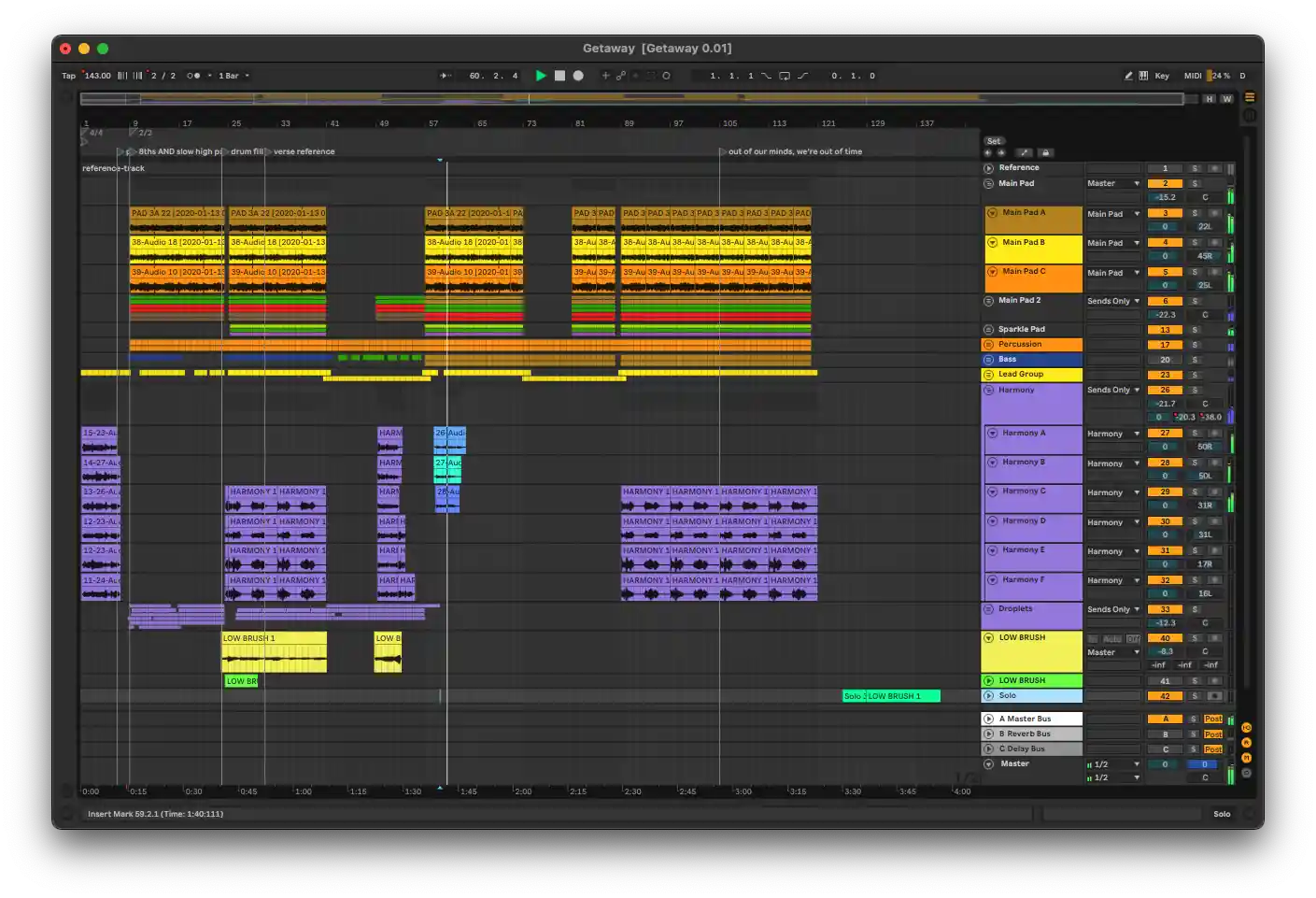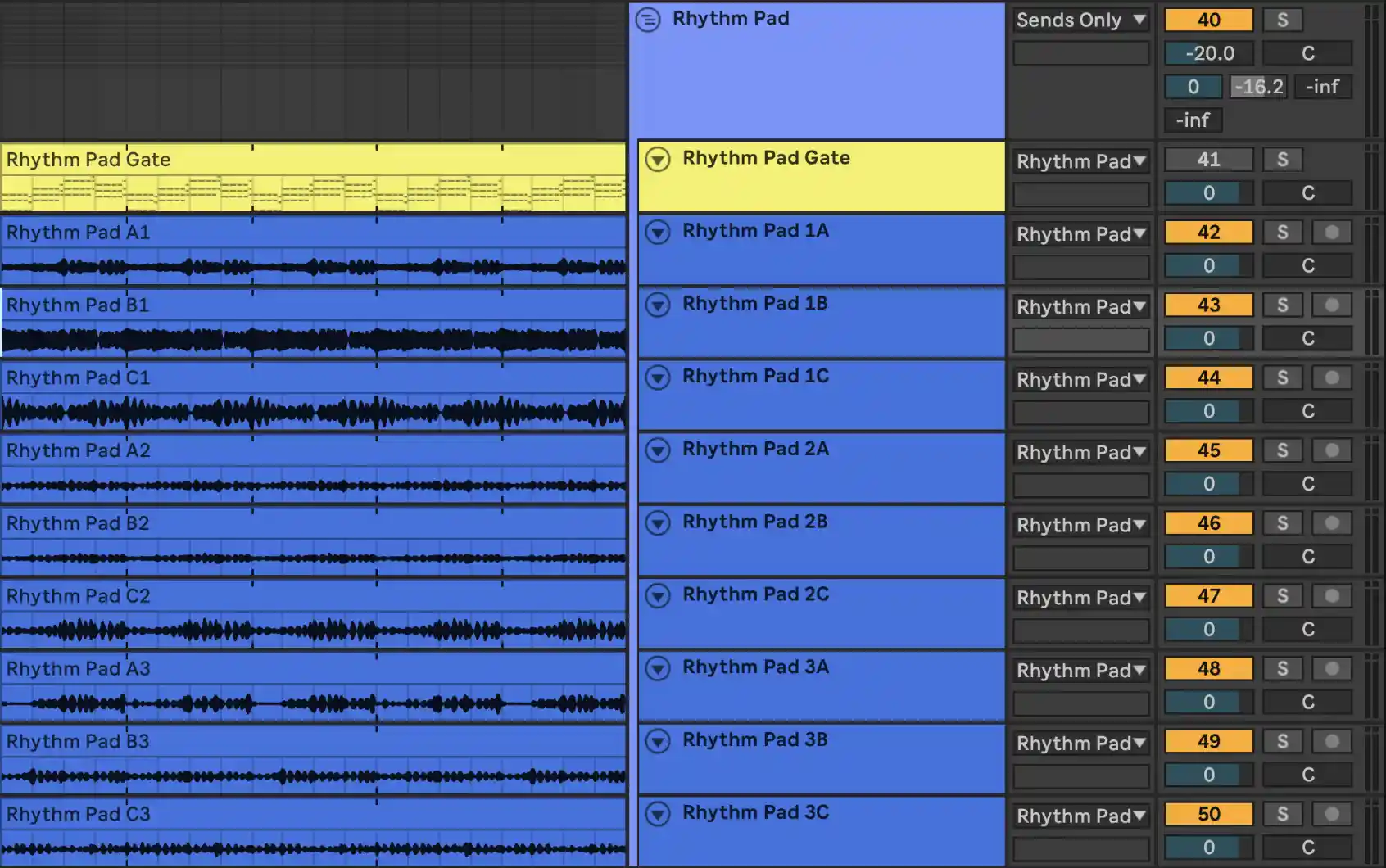The Making of VX1: Arranging
This is part 2 of the process in The Making of VX1
For me, arranging in this album was usually in the form of an unorganized project session. If I hadn’t created an Ableton Live session during the songwriting phase, I definitely will have one here. At this point, my initial starting point is generally a song over a loop or a song over midi instruments. I want to get off any acoustic piano recordings at this point, because I have less control in-the-box.
When I write electronic music, I tend to arrange and track at the same time. In this album, arranging and tracking were a bit more discreet. This is because tracking solo acappella is VERY tiring and time consuming. So for most of the arranging process, I sing at half-voice. I generally consider arranging “done” when I feel that I know what all the parts are, and have them all sung and tracked into my DAW.
My Acappella Toolbox
I talk a bit about my general acappella arranging philosophy in my previous blog post on arranging, so I will focus specifically on a few techniques I use extensively in this album that I don’t see too many people using. Note: I also go a bit more in-depth in each individual song’s session walk-through. Find those from the homepage of The Making of VX1.
Creative Vowel Usage #
I use shifting vowel sounds for a lot of my pads. I often hear arrangers write these into long-spanning whole notes, but not on a shorter-note basis as a texture. One song that is almost completely built from these kinds of textures is Highwire. I use quick-shifting vowel sounds both as the basis for the bass line, but also throughout the song as different “synths”:
Vocal Instrument Layering #
In this album, I generally eschew the idea of traditional vocal parts. There is no “soprano” or “tenor”. I think of this album more like “instruments” that I create by grouping voices together. For example, I will often sing multiple versions of the same note with different vowel sounds in order to create one interesting sound.
A lot of this is the same way one would create a blend of coffee: I have one sound that is the “body” (the base that “glues” the sound together), and combine that with other “texture” sounds. Generally, there is something specific I’m looking to get out of each texture components.
Example 1: Charlatan Days Pads
This Charlatan Days pad consists of three different sounds for each note.
The components of this sound are something like this:
The Body
This is the “body” of the sound. It defines the general vibe and feel of the sound, and defines its roots. This one is an “Ah” to “Ooo” vowel transition.
Adding some brightness
In this particular sound, the body is a little dull, so I want to add some brightness. In this case, I really like to double with 8va whistles. They are higher-frequency sounds that can be used to add brightness and air.
For the aftertaste
This is to add some extra character after the initial impulse of the sound. If we’re sticking to the coffee metaphor, I added this for the aftertaste.
Example 2: Pay Attention Whistle-Hum
This sound is another example of how you can change the feel of a sound by adding some additional textures. At its core I wanted this line to feel a bit wistful, so a whistle makes sense. However, a whistle just felt a bit too joyful, and I wanted to make it a bit more understated. So I took another whistle track and pitched it down an octave to make it more like a weird hum to double the track. That with the hum melody that occasionally supports and occasionally counters creates the feel I as going for.
Arranging Time Chamber
As an example of the kind of idea of how non-linear the progression of songwriting and arranging can be, I am putting together timelines of how each song developed over their creation. You can find these from the homepage of The Making of VX1.
But as an example, here are a few versions of “Highwire”, as it progressed:
Next: Tracking


